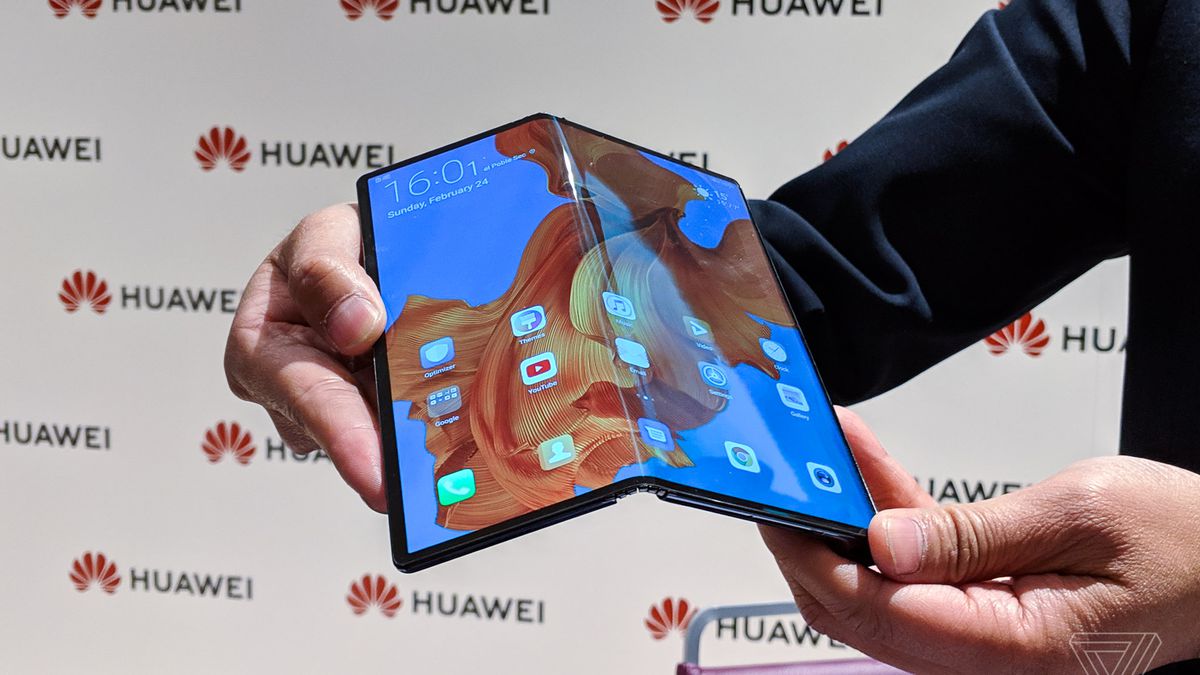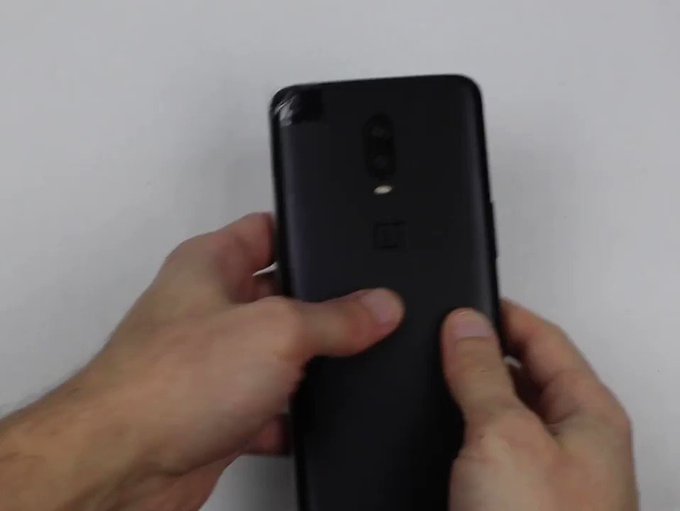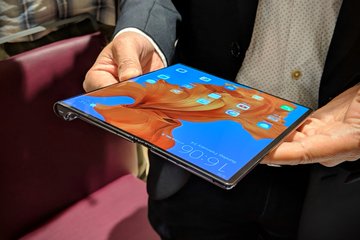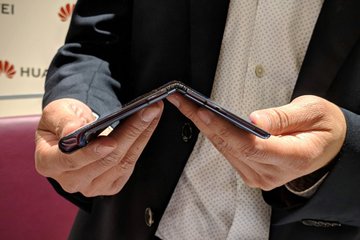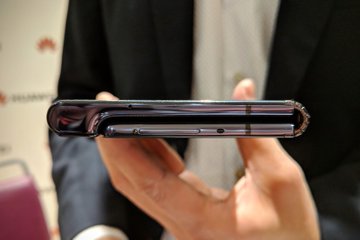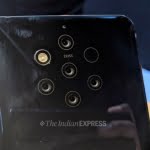/cdn.vox-cdn.com/uploads/chorus_image/image/63116702/vsavov_matex_mwc19.0.jpg)
e’re at the beginning of the beginning of the foldable smartphone era, as you might be able to tell from the explosion of hype surrounding these sci-fi devices. Attending Mobile World Congress this week, I look at the excitement coming from manufacturers, mobile carriers, and eager tech enthusiasts, and I see tremendous, almost universal energy and demand for this category to become a significant part of our shared technological future.
In the past, the market’s waited for Apple to popularize new product categories, as it did with the iPad for tablets, but now the rest of the tech industry is forging ahead. Patience is low, enthusiasm is high, and, judging by the Huawei Mate X unveiled yesterday, product design and development are already at an advanced stage.
Before delving into why the Mate X has me, and the majority of other MWC attendeesexcited, it’s worth recapping the brief history of foldables so far. First there was Royole, a scrappy startup focused on building flexible displays, which simply had to rush some sort of product out on the market in order to say it was first with a foldable gadget of this kind. The result, the $1,300 Royole FlexPai that I played with at CES in January, was a charming but predictable mess. It demonstrated how immensely difficult it is to develop an entirely new form factor from scratch.
Less than a week ago, Samsung completely overshadowed its Galaxy S10 launch with the debut of the Galaxy Fold, its $1,980 foldable device. The Fold is a good-looking phone-tablet hybrid, with a measure of design polish and a relatively near release date that suggest it’s close to a finished product. But I do not hold the Fold in high regard. The device is the thickness of two phones, has enough cameras and RAM for two phones, provides the same screen real estate as two phones, and, yes, it costs the same as two phones as well. Ars Technica’s Ron Amadeo summed it up neatly in a humorous video he tweeted in the wake of Samsung’s announcement. It’s not that Amadeo and I can’t see the innovation of the Fold, it’s that we expect something a little less precedented from a device that’s supposed to redefine mobile computing.
As of today, I think the foldable that comes closest to the goal of resetting our expectations and use of mobile technology is the €2,299 ($2,600) Huawei Mate X. This is the most refined design, the slickest and thinnest form factor, and the most sensible use of space that any manufacturer has yet shown. (Amusingly, a senior Oppo executive has posted photos of an Oppo foldable design that’s roughly the same as Huawei’s; so this idea has made the rounds among Chinese product makers).
The Mate X uses one 8-inch flexible OLED panel to give the user three screens. When it’s folded, you have one 6.6-inch, notch-free, and bezel-starved main display combined with an elongated 6.4-inch rear display. The latter lets you take selfies with the main camera system. Once you open the device up, you get an almost-square, almost bezel-free 8-inch screen.
:no_upscale()/cdn.vox-cdn.com/uploads/chorus_asset/file/14504628/huawei_matex_mwc192_vsavov6.jpg)
:no_upscale()/cdn.vox-cdn.com/uploads/chorus_asset/file/14504608/huawei_matex_mwc192_vsavov9.jpg)
:no_upscale()/cdn.vox-cdn.com/uploads/chorus_asset/file/14504549/huawei_matex_mwc192_vsavov7.jpg)
Where the Samsung Galaxy Fold gives you a compromised smartphone experience — 4.6-inch screen with bezels straight out of the early 2000s and a thickness to match — the Huawei Mate X is pretty much on par with modern flagships. Yes, it’s a sliver thicker than your typical smartphone, but it’s not twice as thick, like the Galaxy Fold is. The Mate X doesn’t just combine a phone with a tablet, it combines a highly respectable dual-screen phone with a tablet. That is unprecedented.
There’s no gap in the Mate X when it’s folded, as there must be with the Galaxy Fold, because the screen is on the outside rather than the inside of the fold and therefore there’s no threat of it creasing. I have to stress the obvious here: wrapping the screen around the outside of the device exposes it to many more hazards than putting it on the inside like Samsung has done. I don’t know what sort of anti-scratch coating or treatment Huawei might have applied to the Mate X, nor what sort of repair and replacement policies it might offer. The company hasn’t even said whether the Mate X would support screen protectors of any kind, though it will provide a cover case that will protect the rear and side portion of the screen when the Mate X is used as a smartphone. This remains an area of concern.
/cdn.vox-cdn.com/uploads/chorus_asset/file/14420443/huawei_matex_mwc19_vsavov15.jpg)
One related trend that makes a design like Huawei’s more acceptable these days is the fact that every flagship phone now has glass on both the front and the back. The Huawei Mate X has a plastic rather than glass screen — glass doesn’t fold — which is liable to be even easier to scratch than modern phone displays. Still, that might have been more of a deal breaker a few years ago, in the time when the majority of phones had aluminum shells. But we’re all rapidly growing used to the additional vulnerability of our phones, and with that, our tolerance for more fragile devices grows.
The most ingenious turn to this entire design for me is the way Huawei has slimmed down the majority of the device and given the user a thicker grip section to house the cameras. As consumers, we insist on top-quality imaging, which requires depth for lenses and sensor modules, but we also want incredible thinness at the same time. Huawei’s balance of the two with the Mate X is commendable, and with a 5.4mm thickness of the main display panel, the device still enjoys that sci-fi cachet that comes from being vanishingly thin.
:no_upscale()/cdn.vox-cdn.com/uploads/chorus_asset/file/14504691/huawei_matex_mwc192_vsavov4.jpg)
My key question for judging a new piece of mobile technology is to ask, does the new device improve on what I could do with a smartphone previously? Wrist-worn fitness trackers are an obvious “yes” in that respect: I don’t want to go running or swimming with a $1,000 supercomputer in my pocket. Smartwatches, on the other hand, that try to feed me notifications and replace my phone for handling messages and alerts, are a “no.” The Galaxy Fold is a “maybe” for me, and the Mate X is closer to an affirmative “yes.”
Tablets in the 7- to 8-inch range have proven popular with the people who used them, but their in-between size — which is too big for a clothes pocket, but smaller than, say, a 10-inch tablet that could be carried the same way — has made them something of a niche. The Mate X design breathes new life into those tweener tablets by halving their size and making them pocketable (for men, at least). It does so better than the Galaxy Fold by keeping the thickness under control, making better use of its single display, and by avoiding ugly camera cutouts.
There’s still a long way to go with foldables. It would be nice to be allowed to hold some of them, and to see if they’re as light as they look. The overriding reason for Samsung and Huawei’s reluctance to let us play with their new devices isn’t really about the hardware — I watched a Huawei rep handle the Mate X with the same casualness with which I use my phone. This device is physically ready. It’s the software that’s keeping Samsung and Huawei product managers up at night. Neither company is famed for its great software innovation, and both will be hoping for some help from Google (which has already been promised) in figuring out simultaneous multitasking on their new slates.
The Mate X has turned a lot of naysayers about foldables into believers, and the difference has been one of refinement and quality of design. Prices will need to climb down from the stratosphere before most of us start talking about buying one, but, in talking to IDC analyst Francisco Jeronimo at MWC, I learned that mobile operators can’t wait to get foldables into their stores. Their overriding question about the Galaxy Fold has been “how many can we get and how soon?” So the hype is real throughout the producer-consumer chain. Samsung plans to release its Fold in April, and Huawei will follow with the Mate X in June, asking a higher price but also bringing the added hype sticker of 5G.
At this early stage, with so much still left unknown and foldables still mostly untouchable, all we can really opine on is the design that each company has shown us. Having seen the Huawei Mate X from up close, I’m confident in the logic and aesthetic appeal of its design. This is the future I want to see more of.
[“source=theverge”]

